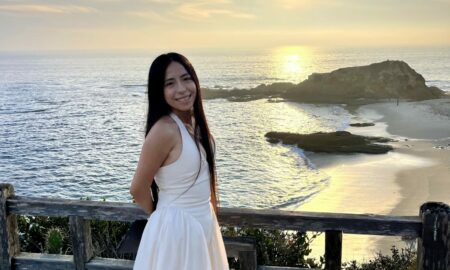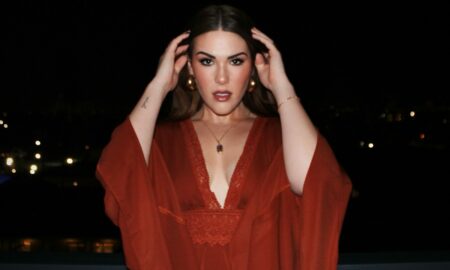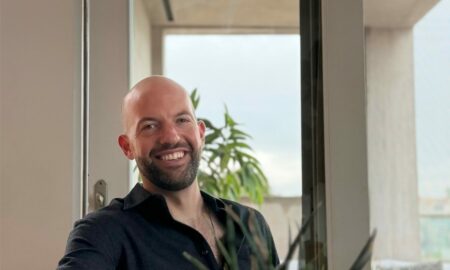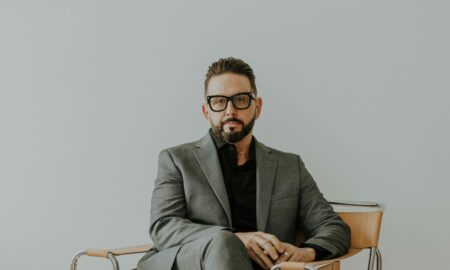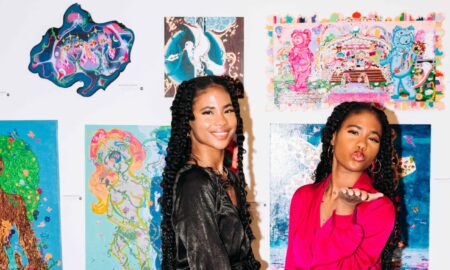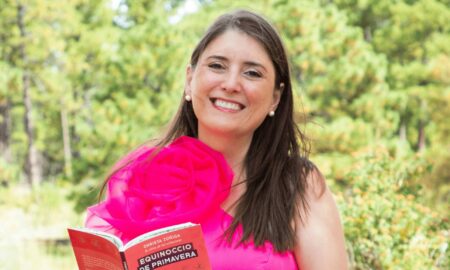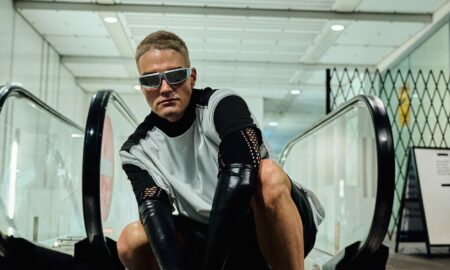

Today we’d like to introduce you to Shasta McBride.
Shasta, can you briefly walk us through your story – how you started and how you got to where you are today.
I grew up on Kauai in a family of artists surrounded by incredible natural beauty and power in nature, the ocean, and the people. I would spend my free time exploring my exotic surroundings and then write down what it was and what it was like because everything felt like a magical adventure of some kind. I felt that describing something helped me to commune with it and know it more. I remember my mother taking me under a waterfall to a secret chamber in a hidden valley when I was five and telling me we went to Narnia. Everything was like that; magic and happy and possible. I wanted to fuse with everything.
I started taking photography classes in high school and college. Writing was still easier for me to express feelings but I kept taking pictures when I could. My main photo project in school was a contemplation of the light on the water. It was hard to get it right in the darkroom and a slow process.
Over the years, my friends taught me about photography. Mostly I was their model, but after a while I started to take pictures of my own. My phone was my main camera for years, used usually in a journalistic style. Eventually, I wanted to play around with physical mediums and tried out polaroid, underwater cameras, prisms, colored lenses, and wet plate workshop. I remember the moment Roxanne Prescott, who is a skilled photographer, showed me a salt print she had done and I thought it was the smoothest most beautiful texture I’d ever seen. She also showed me digital pinhole and let me borrow a real camera to play around with and I remember being at the beach with my friends taking pictures of the ice plants in the sun with the digital pinhole lens thinking this was the most incredible thing I’d ever seen. I still love those images!
Now I am still meditating on the light on the surfaces of the water. Right when digital cameras and home printers were becoming a thing, my father would take pictures of the light on the waves in front of his house every day. He had hundreds of slight variations, all of them sticking together from the salt spray. My cousin Rebecca Culbreth is a photographer in Los Angeles and the main muse in my images. We help each other with projects and pose for each other. She uses a Nikon and I use Canon and we have different styles but there is a nice overlap and camaraderie shared.
I love beauty and tend to relate to it as a feeling before I “see” it visually. Beauty is the essence of a life of love distilled into its finest drop and is the primary way I relate to everything here. From there, I try to create this feeling in my art, whether is photography or writing. To me, beauty is a healing energy that restores my being and is a non-verbal communication of love.
Overall, has it been relatively smooth? If not, what were some of the struggles along the way?
In my memory of Mihaly Csikszentmihalyi’s book Flow he talks about your flow state finding you when you are being challenged but you can accomplish the task, despite the fact that it will be hard and you can’t control all the outcomes. I would say taking photos and writing is like this for me. Sometimes the photoshoot I prepared for the most will be a dud and sometimes the most unexpected moment the day after will be the best shots…I’d say the biggest struggle is usually allowing myself to take the full time it takes to be creative and develop on an idea beyond a sketch. I think it can take years to perfect what is in the mind’s eye, and perhaps the trick is not minding that it’s going to take a long time. Also, there is no finish line or ground. There is no one saying, “Here! Stop here, this is enough. This is the best one.” That simply isn’t true for any artist.
We’d love to hear more about your work and what you are currently focused on. What else should we know?
I work as a freelance photo-artist and writer. My work is a study on the natural softness found in the world around us; the nighttime sky, the ocean, women, water, and flowers. Growing up in Hawaii, these were my main influences. I am known mainly for doing underwater photos of women and flowers with prism lenses. I am most proud of innovating new ideas to try and test out.
Any shoutouts? Who else deserves credit in this story – who has played a meaningful role?
My mother Sandra McBride is an artist and a mystic who taught me to draw my feelings. My grandmother Grace Meredith was a painter, as was her husband, Sam Colburn. Grace was always helping me to see color. Carol Yotsuda was an art teacher who taught me to connect what my eyes saw to my hand and trust that process. In 2007, I was an art fabrications intern for Da Plastique, a company that manages the artwork of Adi Da Samraj. It was the first time I got to see large-scale art being made at Carlson and Co in the Valley. Peter Frank talked to me about writing about art and I wrote a few pieces for his magazine THE. Roxanne Prescott taught me a lot about the original processes of photography, and I love her style. Steven Murashige is also a brilliant artist who has given me advice over the years. Tamarind Free Jones taught me about posing and lighting. I also learned a thing or two from Ivy Ney, who I later discovered took that infamous Grace Jones shot. Lisa S. Johnson taught me about different printing techniques like diamond dust and also about making photo books. And Rebecca Culbreth is a photographer I’ve worked with for the last five years.
Pricing:
- Prints come in several sizes in limited editions of 5-20. Prices range from $150-$650
Contact Info:
- Website: www.shastamcbrideartist.com
- Instagram: instagram.com/shastamcbride
- Facebook: https://www.facebook.com/shastamcbrideartist
- Twitter: twitter.com/shastamcbride







 Image Credit:
Image Credit:
Horizontal Portrait of me by Rebecca Culbreth
Suggest a story: VoyageLA is built on recommendations from the community; it’s how we uncover hidden gems, so if you or someone you know deserves recognition please let us know here.












